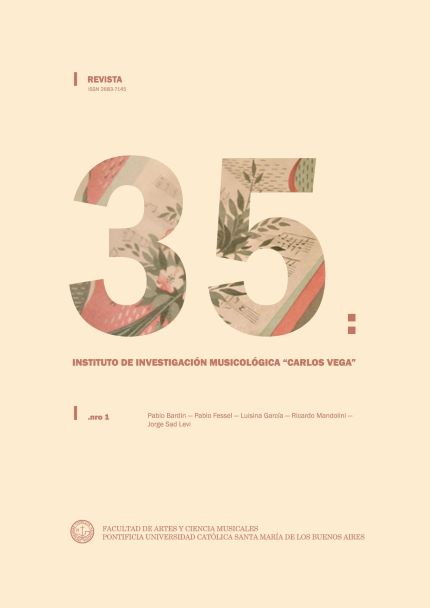Art and mimesis: the philosophical controversy
Keywords:
Mimesis, Music, Philosophy, Hermeneutics, ExegesisAbstract
“Art and Mimesis” is the common title of two articles subtitled “The Philosophical Controversy” and “In the Footsteps of Aristotle” respectively. “The Philosophical Controversy” undertakes an exegetical analysis of the concept of mimesis by interpreting texts by Plato, Aristotle and Hegel. In the case of Plato, the ambivalences of content are evidenced by comparing two of his fundamental dialogues: The Republic, which corresponds to the period of his maturity, and The Timaeus, which is part of his later works. In the former dialogue, Plato radically condemns mimesis, categorising it as pernicious and superfluous for the education of youth. In the latter dialogue, on the contrary, mimesis is the foundation for understanding the task of the Demiurge. He is not only a craftsman who copies the Ideas of the Topus Uranus into the reality of the world, but in this process he must put everything of himself; otherwise the transformation would be incomplete. Let us turn to Hegel: in his Lectures on Aesthetics, the philosopher disdains mimesis in a radical way by underestimating its value, since it does not belong, in principle, to the process of dialectical evolution of the spirit. However, he is forced to review these considerations when it comes to explaining the transition from symbolic to classical art, since mimesis as a search for resemblance to the natural model turns out to produce in return the gradual and irreversible individuation of the spirit that embodies it. Thus the classical artist leaves behind the representation of myths and hieratic gods to enter the meanderings of human passions. From the interpretation of the texts we infer that both idealisms, Platonic and absolute, present strong inconsistencies with respect to mimesis, and, in spite of their attempts to underestimate it and leave it aside, they are forced to return to it in the end as an indispensable piece to complete their respective systems. It is not by chance that both idealisms interpret the arts within the globality of their respective interpretations, corseting artistic activity from the outside and overlooking the essential: the unique value of the work and the emotions it arouses. Here our investigation inevitably leads us to Aristotle’s conception of mimesis. It so happens that, although nowhere does the Stagirite give a clear definition of this concept, The Poetics allows us to address the various cases of the application of mimesis. In order to delve deeper into the complexity of what Aristotle means by this term, we have had to make a transversal reading of his key works, stopping particularly at the Nicomachean Ethics. Thus, we discover that, twenty centuries before Alexander Baumgarten —considered the father of modern aesthetics— Aristotle’s mimesis opens wide the doors to an epistemology of art based on rules that are proper to it and different from those of logic, where what prevails is not Truth but the conviction of the performer and his plausible and convincing concatenation of events.Downloads
Download data is not yet available.
Downloads
Published
11/23/2021
How to Cite
Mandolini, R. (2021). Art and mimesis: the philosophical controversy. Revista Del Instituto De Investigación Musicológica Carlos Vega, 35(1), 41–63. Retrieved from https://e-revistas.uca.edu.ar/index.php/RIIM/article/view/3773
Issue
Section
Artículos
License





 e-ISSN 2683-7145 | ISSN 1515-050X
e-ISSN 2683-7145 | ISSN 1515-050X